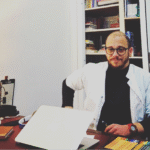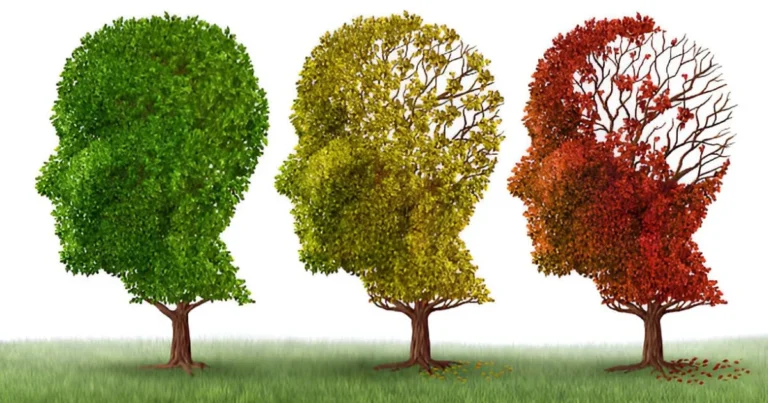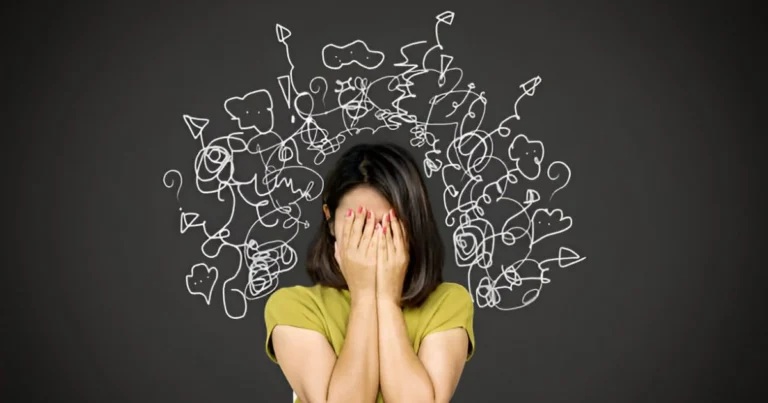Mental health begins in the body
There are evenings when the soul falls silent, and the body, in its subtle tremors, tells the whole story: the shoulders weighed down by past sorrows, the quickened breath of silent fears, the sluggishness of movements where hope loses its way. Perhaps it is here, in this wordless language of flesh, that the most intimate truth of who we are resides.
When we talk about mental health, we often focus on thoughts, emotions, anxiety, or depressive disorders. What we tend to overlook is a silent, discreet, yet central player: the body.
Mental balance isn’t only a matter of neural networks or brain chemistry. It is also rooted in how we inhabit our bodies, perceive their signals, and use them to interact with the world. Our posture, the fluidity of our movements, the rhythm of our breathing, and even the quality of our muscle tone are not only indicators of our psychological state they are also powerful therapeutic tools.
Recent findings in affective neuroscience confirm what body-based practitioners have known for years: emotions are not purely cerebral abstractions. They are embodied, and their regulation often occurs through the body. Anxiety, for instance, comes with a racing heart and rapid breathing; sadness is often expressed through slow movement and low muscular energy. These physical manifestations are not merely side effects they actively shape our emotional experiences.
In a world increasingly lived “in the head,” we risk losing touch with our bodily sensations. Many people are unaware they are tense, contracted, or short of breath until these signs evolve into chronic pain, sleep disturbances, or emotional exhaustion. This is precisely where psychomotor therapy steps in.
Still largely unknown to the general public, psychomotor therapy places the body at the center of psychological care. It starts with a fundamental premise: mental health cannot be sustained if our relationship with our body remains fragmented, tense, or alienated. The psychomotor therapist doesn’t merely treat physical symptoms they guide the individual toward re-establishing unity between bodily sensations, emotional life, and mental representations.
This approach involves various aspects, such as bodily awareness (feeling one’s grounding, tone, posture), movement quality (fluidity, coordination, expressiveness), spatiotemporal orientation (navigating space and time), and emotional resonance (recognizing and regulating how emotions manifest in the body).
By using the body as a bridge between inner life and the external world, psychomotor therapy offers a holistic approach. Its goal is not only to “heal the mind,” but to reconcile the individual with their bodily experience providing solid ground for lasting psychological balance.
🔗 Read also: Where body and mind meet: The crossroads of psychomotricity
When the body tells the inner story
Just observe: an anxious person’s shoulders are tense, breathing shallow, movements restless. Someone who is sad walks slowly, speaks in a flat tone, eyes downcast. The body often expresses what words cannot yet articulate.
Since the work of physiologist William James in the 19th century to today’s research in affective neuroscience and embodied cognition, studies have shown that emotions are not detached from the body they are expressed through it.
Anxiety activates the sympathetic nervous system, triggering rapid heartbeat, fast breathing, and muscular tension evolutionary responses preparing the body for flight or defense. In contrast, sadness slows down bodily tone and energy. The body slumps, movements diminish, the voice loses its vitality. Anger brings generalized tension, a flushed face, abrupt gestures, and stronger breathing signals of a body ready for action and assertion.
These expressions aren’t merely visible consequences; they are integral to the emotional experience itself. Psychologist Antonio Damasio’s somatic marker hypothesis demonstrated that the brain uses bodily cues like heart rate or muscle tension to feel and decide. Without the body, emotion would be incomplete.
The relationship is bidirectional: working on the body can shift internal states. Breathing exercises or heart coherence techniques, for instance, slow the heart rate and send safety signals to the brain, reducing anxiety. Open body postures standing tall, breathing deeply, stretching foster confidence, while closed postures perpetuate fatigue and despair. Rhythmic movements like walking, dancing, or swaying stimulate neural circuits involved in emotional regulation.
In psychomotor therapy, the body becomes a therapeutic tool. Reading bodily signs reveals mental states; working with tone, breath, and rhythm supports emotional balance. The mind-body mirror reflects and can reshape our inner world.
🔗 Explore further: The moving mind: Why psychomotricity builds more than muscles
The inner map of the self
To understand the link between body and mental health, we must consider the concept of body schema a central idea in psychomotor therapy.
Body schema refers to the brain’s internal map of the body, at rest or in motion. It’s how we know where our limbs are without looking, or how we reach for a cup instinctively. This implicit knowledge, rooted in the nervous system, allows us to move smoothly, orient in space, and feel anchored in our own body.
This map is built progressively from early childhood through sensory and motor experiences crawling, climbing, playing hopscotch. It draws on sensory inputs like touch, proprioception (muscle position and tension), the vestibular system (balance and gravity), vision, and even hearing.
When the map is clear, individuals feel grounded, confident, and emotionally balanced. But if the map is vague or disrupted due to neurological conditions, trauma, anxiety, or sensory deprivation (as seen in screen-overexposed children) the body becomes unfamiliar, even distressing.
This may result in poor coordination, clumsiness, or a distorted self-image. Conditions like anorexia, anxiety disorders, or dissociation often stem from an unstable body schema.
Here, psychomotor therapy offers recalibration through movement activities, sensory work, and therapeutic touch. Rebuilding a coherent body map restores psychological and relational stability.
🔗 Discover more: When suffering becomes entertainment: From Rhythm 0 to Trash streaming
Lived body, lived emotion
Beyond body schema lies another essential dimension: lived body experience. This is not about how the body functions or is mapped neurologically, but how it feels from within.
Do I feel heavy or light? Safe in my body or trapped by it? Do I perceive tension, openness, pain, or ease? These sensations shape our emotional world and our sense of self.
Our lived experience is inseparable from our history. A soothing hug in childhood, a fall, a shaming glance, or a trauma all leave bodily imprints. Clinicians speak of “emotional tone” anxious individuals feel explosive tension; depressed individuals report numbness and heaviness; adolescents may feel strange or constrained in their changing bodies.
These sensations are real and impactful. A person feeling stuck in their body will struggle to connect with others. Someone whose body feels like a battleground may develop psychosomatic symptoms: headaches, insomnia, digestive issues.
Psychomotor therapy becomes a sensory lab through breathwork, gentle mobilization, relaxation, or sensory exploration, patients rediscover forgotten sensations: the pleasure of movement, the support of breath, the relief of muscular release. The aim is not performance, but reappropriation. The body becomes an ally not a burden.
Integrative mental health: reuniting mind and body
Psychomotor therapy reminds us of a truth science is rediscovering: we are not just thinking brains we are living bodies.
Each breath, posture, or gesture reflects our inner state and can, in turn, influence it. Recognizing the role of body schema and lived bodily experience opens new dimensions in mental health care.
Where psychotherapy uses words, psychomotor therapy uses movement, sensation, and embodiment. They are not opposites but allies.
In today’s hyperconnected, sedentary world, where stress and screen time disconnect us from our bodies, psychomotor therapy offers reconnection.
It enhances care for children, elders, or those in psychological distress when words fail, the body speaks. Regular movement practices improve sleep, reduce medication side effects, and anchor patients in the present moment.
Reintroducing the body into care is not about replacing other approaches it’s about restoring unity. A unity where the psyche is no longer disembodied, and the body is finally recognized as a resource.
So next time your mind feels stuck, let your body whisper a new path: a stretch, a walk, a deep breath. You might be surprised how much healing begins with movement.

Saad Chraibi
Psychomotor Therapist
• A graduate of Mohammed VI University in Casablanca, currently practicing independently in a private clinic based in Casablanca, Morocco.
• Embraces a holistic and integrative approach that addresses the physical, psychological, emotional, and relational dimensions of each individual.
• Former medical student with four years of training, bringing a solid biomedical background and clinical rigor to his psychomotor practice.
• Holds diverse professional experience across associative organizations and private practice, with extensive interdisciplinary collaboration involving speech therapists, psychologists, neuropsychologists, and other healthcare professionals.
• Specializes in tailoring therapeutic interventions to a wide range of profiles, with a strong focus on network-based, collaborative care.
• Deeply committed to developing personalized therapeutic plans grounded in thorough assessments, respecting each patient’s unique history, pace, and potential, across all age groups.







